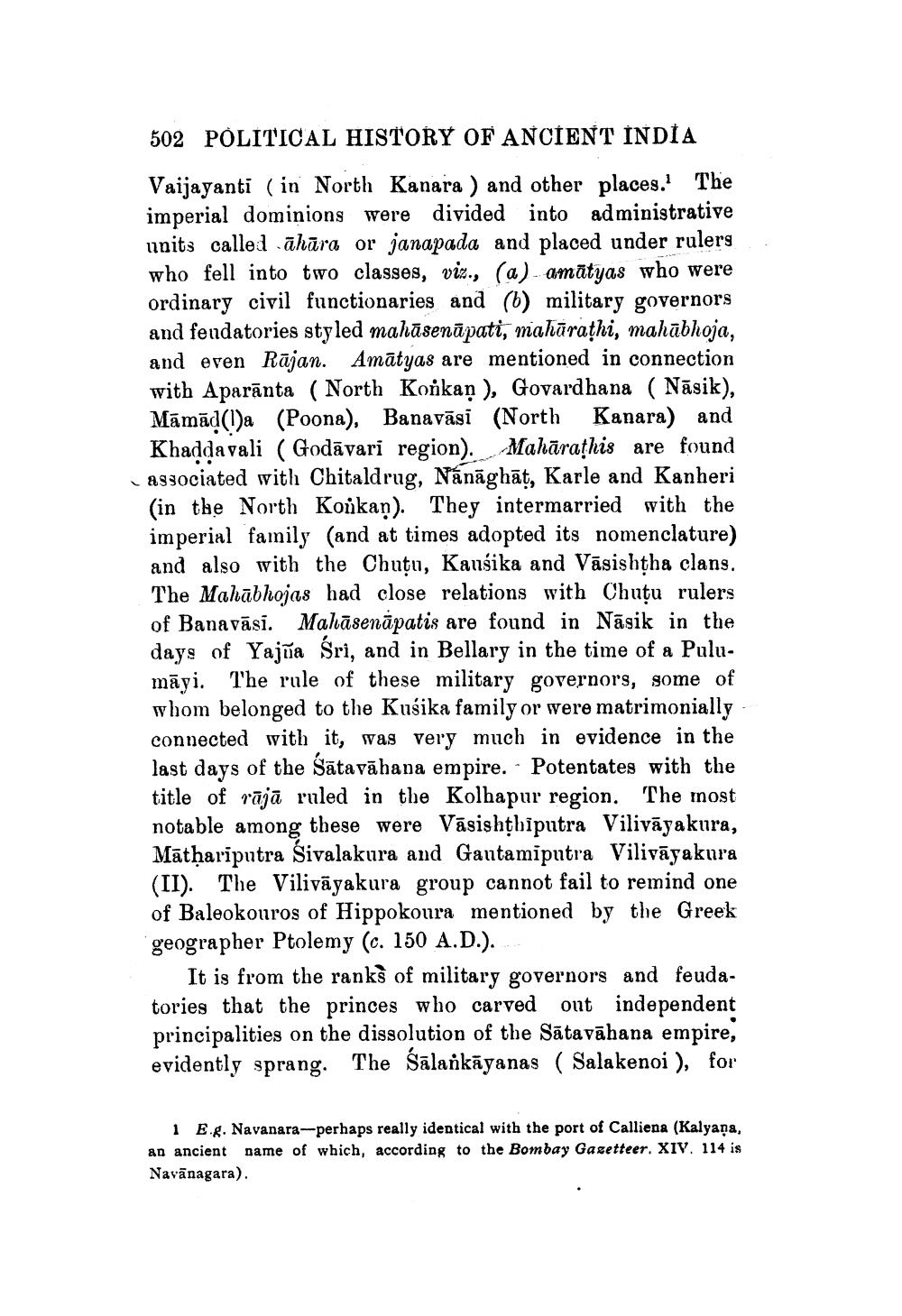________________
502 POLITICAL HISTORY OF ANCIENT INDİA Vaijayanti (in North Kanara ) and other places. The imperial dominions were divided into administrative units called āhāra or janapada and placed under rulers who fell into two classes, viz., (a) amātyas who were ordinary civil functionaries and (6) military governors and fendatories styled mahāsenāpati, mahārathi, mahābhoja, and even Rājan. Amātyas are mentioned in connection with Aparanta ( North Konkan), Govardhana ( Nāsik), Māmād(1)a (Poona), Banavāsi (North Kanara) and Khaddavali (Godāvari region). Mahārathis are found associated with Chitaldrug, Nánāghāt, Karle and Kanheri (in the North Korkan). They intermarried with the imperial family (and at times adopted its nomenclature) and also with the Chuţi, Kausika and Vāsishtha clans. The Mahābhojas had close relations with Chutu rulers of Banavāsi. Mahāsenāpatis are found in Nāsik in the days of Yajña Śri, and in Bellary in the time of a Pulumāyi. The rule of these military governors, some of whom belonged to the Kuśika family or were matrimonially connected with it, was very much in evidence in the last days of the Sātavāhana empire. · Potentates with the title of rājā ruled in the Kolhapur region. The most notable among these were Vāsishthiputra Vilivāyakura, Māthariputra Sivalakura and Gautamiputra Vilivāyakura (II). The Vilivāyakura group cannot fail to remind one of Baleokouros of Hippokoura mentioned by the Greek geographer Ptolemy (c. 150 A.D.).
It is from the ranks of military governors and feudatories that the princes who carved out independent principalities on the dissolution of the Sātavāhana empire, evidently sprang. The śālankāyanas ( Salakenoi ), for
1 E.g. Navanara-perhaps really identical with the port of Calliena (Kalyana, an ancient name of which, according to the Bombay Gazetteer. XIV. 114 is Navānagara).




